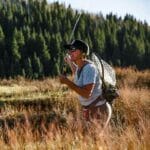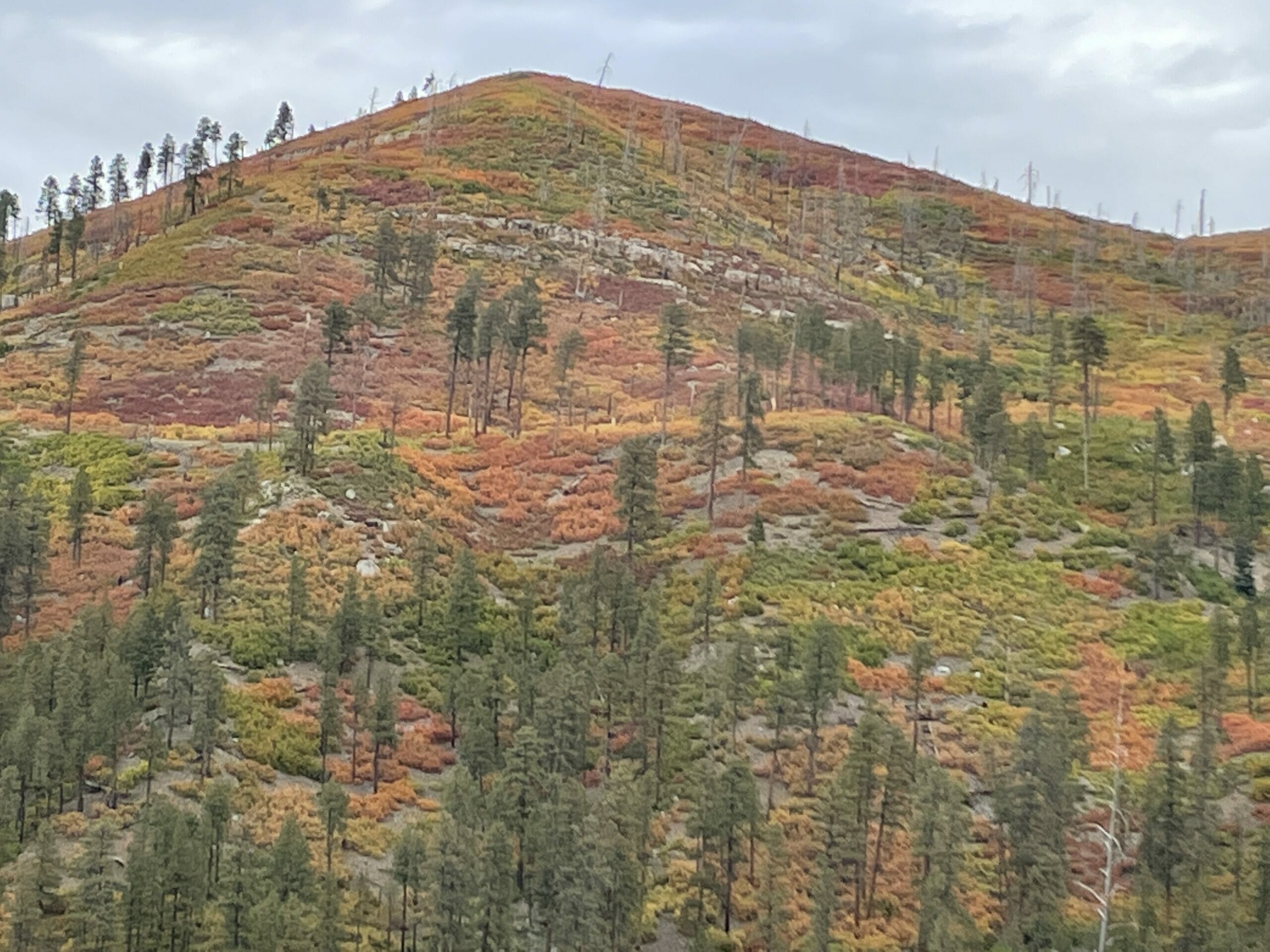The colors of fall excite my retinas. Green leaves slowly fade as dormancy becomes them — it’s their yearly retreat so they can prepare for renewal come spring.
Yellows are most common out west, but we also have vibrant oranges and even some reds. Oranges and reds of the changing scrub oaks and wild strawberries stand out against the otherwise muted yellow tones. Wild rose hips are prime for the taking (I’m dehydrating some for tea as I type) and Solomon’s seal berries pop off river banks. And of course, the stripe on rainbow trout is one of my favorite reds.
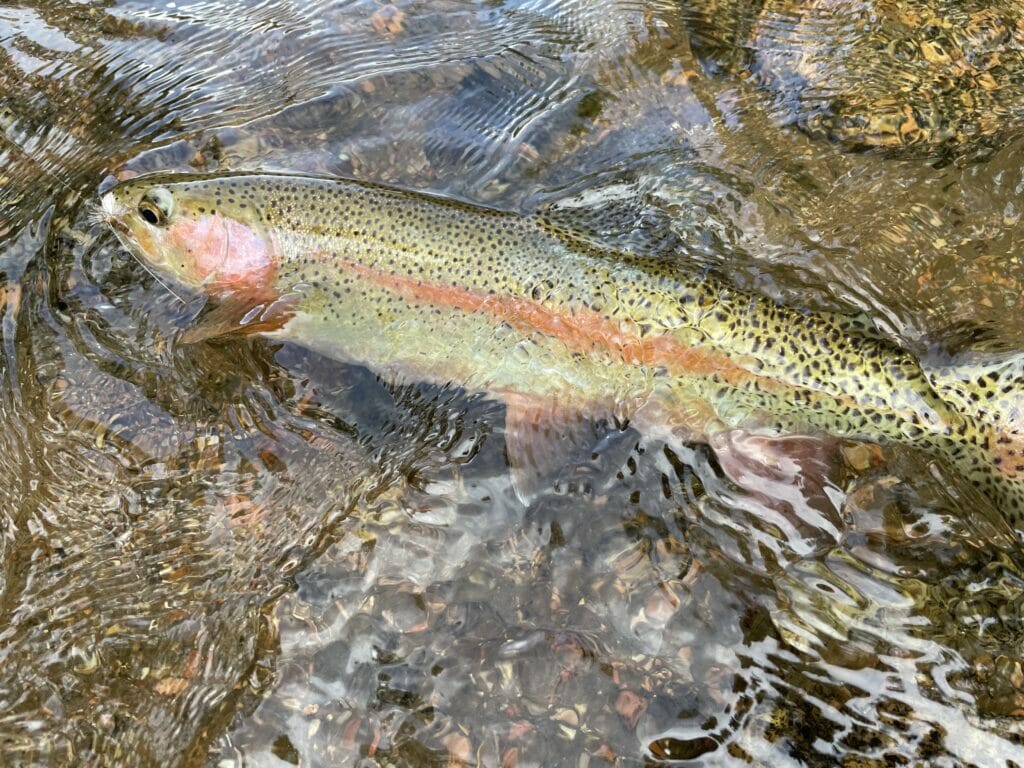
But these aren’t the reds I’m talking about. I’m talking about redds … the spawning nests in trout and salmon streams that hide in plain sight. We need to be on the lookout for them when we’re on the water. And you can help us. More on that below.
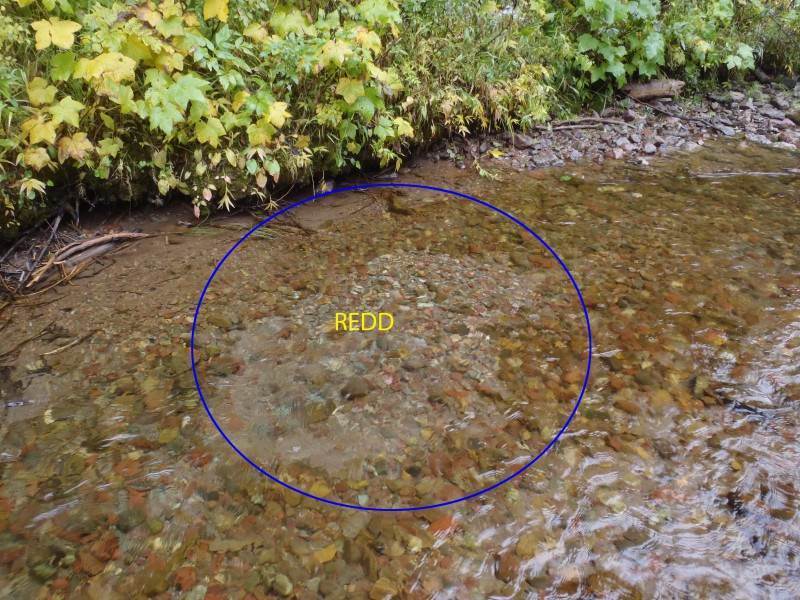
When on a stream, anglers should look for clean, gravel beds with flow going parallel to the gravel pile. This is where females excavate a shallow pit where she’ll lay her eggs to be fertilized by a male. When the female is done creating the pit and has spawned with a male, the female will cover the eggs with her tail, which creates an elongated section of gravel. Redds can vary from around one square foot to yards by yards long. The depth needs to be adequate for the size of the spawning fish and the flow sufficient enough to provide good oxygenation for the eggs to hatch.
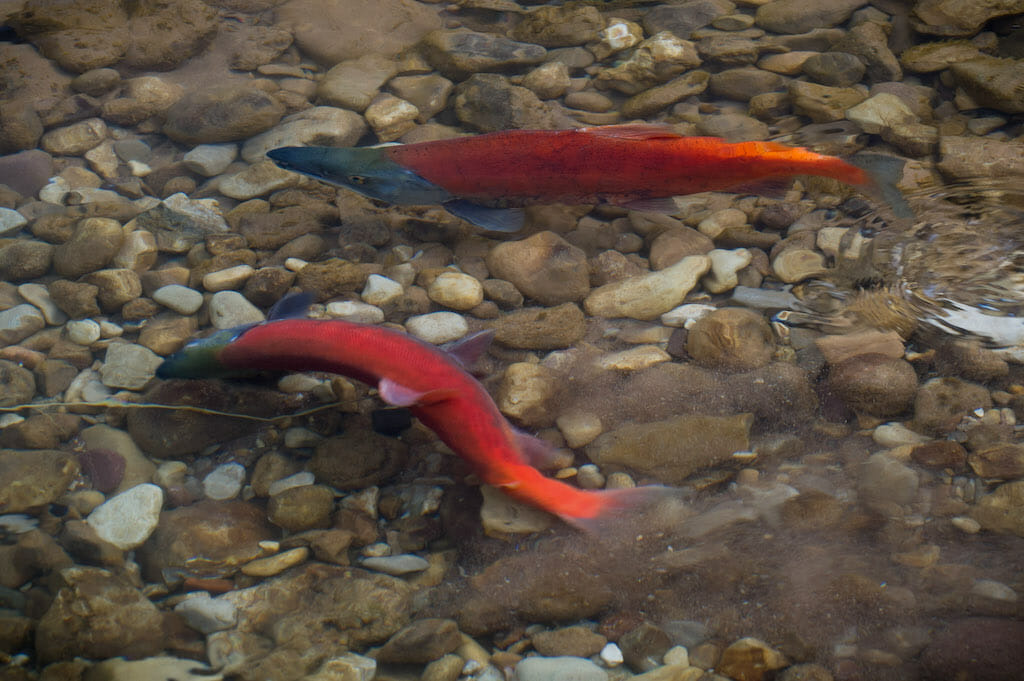
Why do we need to avoid these redds? Walking over these redds can smash the fertilized eggs and stir up the water with fine debris, which can also cause harm by decreasing the amount of oxygen available.
It is also not wise to target fish on these beds. Though tempting as it might be, who among us would want to be hooked in the face while reproducing? The ethics of fishing redds is certainly debatable, but as an angler who likes a challenge, these fish are easy targets that are trying to replace calories expended during spawning. They will eat nearly anything and protect redds against anything that might be out to steal an egg or two — your Woolly Bugger might be mistaken for a sculpin looking for an easy meal. I personally don’t find this type of fishing rewarding and I’m all for leaving redds alone.
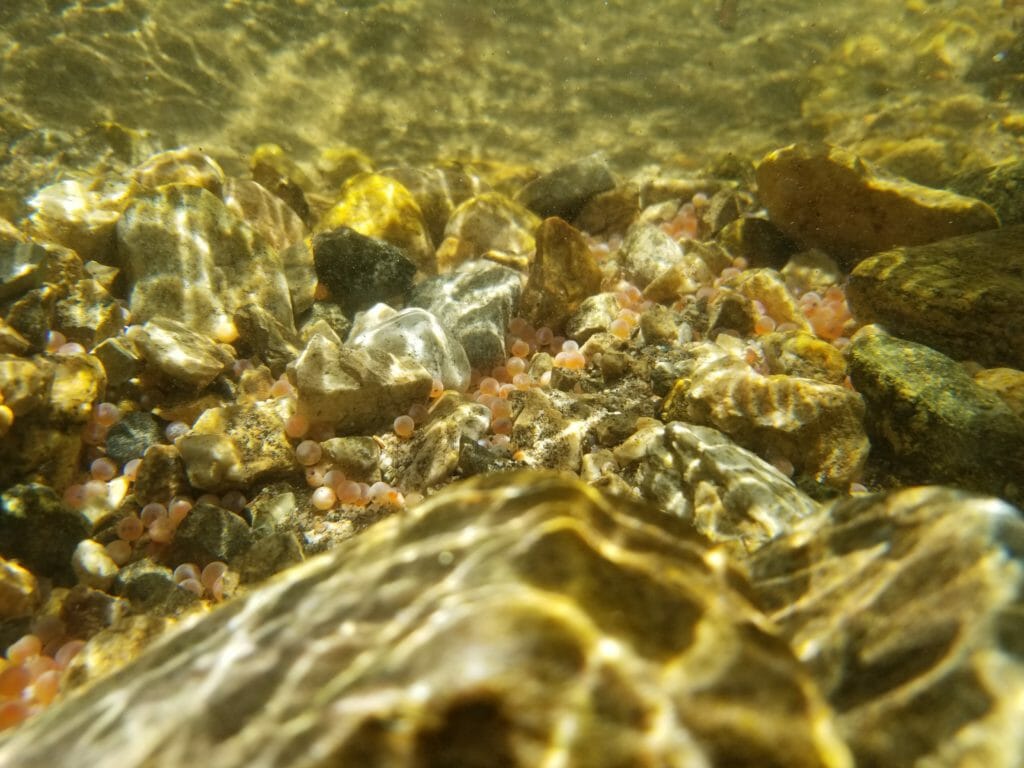
Now that you know what redds are and why you should avoid them while wading and fishing, you should consider yourself a redd-finding expert. And with that, we could use your help in letting us know where they are on your favorite river.
TU launched a Spawning Redd Survey Tool for smartphones (through the Survey 123 tool for iPhones or Androids), which will help inform management and steer restoration efforts. This can help identify critical habitat areas to understand the health of a stream reach. This can be easily sent in to TU via your smartphone, but if you don’t have one, don’t worry. We also have printed redd data sheets, and a camera and GPS unit are also helpful. For more information, check out our YouTube video below for detailed instructions on how to use it.
Thanks for your help and have fun out there enjoying all of fall’s reds and redds.


